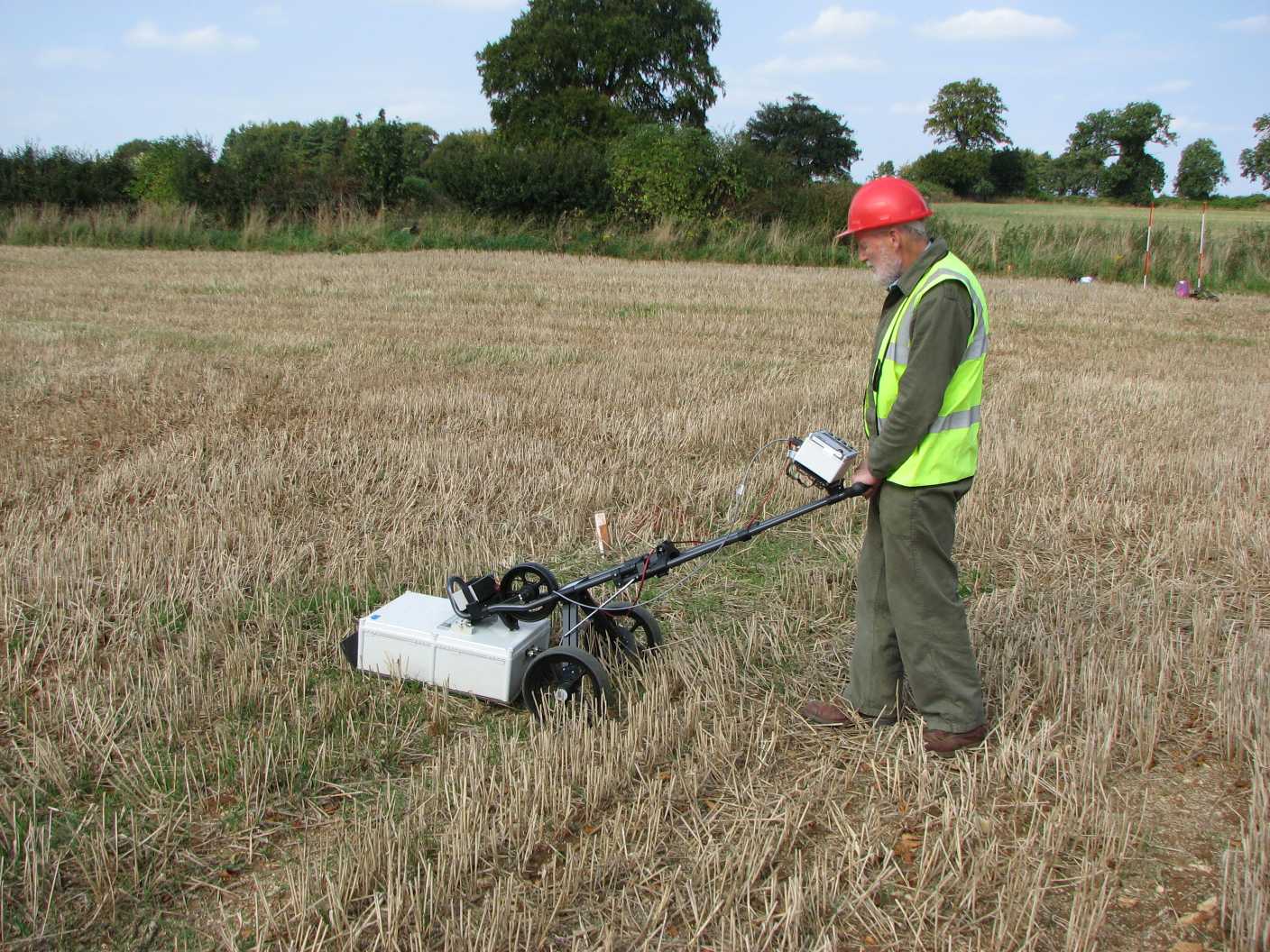Ground penetrating radar
PLEASE NOTE: As from June 2021 Archaeological Surveys Ltd are no longer quoting for GPR survey. One of the main reasons for this relates to the persistence of unrealistic expectations from GPR survey coupled with the considerable amount of work required to analyse the data properly and produce a detailed report. In addition, the preparation of data and images for archiving (where required) and the archiving itself incur unrealistic cost penalties on clients that we feel we can no longer support. Although we will no longer be quoting for GPR survey we will utilise the technique in support of magnetometry and resistivity where we feel there are specific aims and objectives that may benefit from GPR. This will be targeted investigation used to clarify certain aspects of buried archaeology. In effect, this will meet the requirement for contingency as set out with the current guidelines.
Ground penetrating radar (GPR) survey can prove effective at locating archaeological features underneath a wide range of surfaces that cannot be surveyed by any other geophysical technique. Good results can be obtained underneath concrete, stone, tarmac and through grass and soil. In addition, an indication of depth can be provided which may prove highly useful where intrusive work is required. Archaeological Surveys carry out the majority of work using the UTSI Groundvue system with either 400MHz or 250MHz antennas.
GPR survey records reflected radio waves that are pulsed into the ground as the radar antenna is dragged along the ground surface. Changes in the ground make-up, such as from soil to stone, provide conditions where some of the transmitted energy is returned to the surface. In this way, subsurface features can be mapped.
Careful timing of the returned radio waves along with calculations of the ground's dielectric constant can allow an estimate of depth to be made.
The transmitted radio energy is very wide in bandwidth but peaks at the resonant frequency of the antenna. As resolution is a function of the transmitted wavelength, a 400MHz system will have a higher resolution than a 250MHz system; however, the lower frequency system may have superior penetration which may be critical in certain conditions. 250 and 400MHz systems are typical of those used for archaeological prospection.
Damp clay soils may present problems at times and it is not uncommon for conditions to be so poor that no penetration below a few centimetres is possible. It's also worth noting that rarely can GPR be used to locate graves. Exceptions exist, particularly if disturbance is recent or if there are buried voids or associated structural features. Although GPR can be useful in urban environments it is usually not possible to unravel complex stratigraphy. Subsurface penetration can extend to approximately 3m+ in ideal conditions but often depths of 1 - 2m are more typical.
